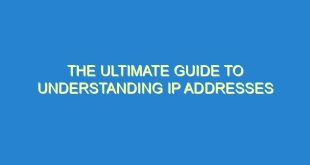Introduction
Data transmission is the process of sending and receiving data from one device to another over a communication channel. It is an essential aspect of modern communication systems, from the internet to mobile phones and beyond. In this article, we will explore the basics of data transmission, the different types of transmission methods, and how they work. So, let’s dive in!
What is Data Transmission?
Data transmission is the process of sending and receiving data over a communication channel. The data can be in the form of text, images, video, or any other digital information. The communication channel can be wired or wireless, and the data can be transmitted using various transmission methods. The primary purpose of data transmission is to enable communication between devices and ensure that the data is sent and received accurately and efficiently.
Types of Data Transmission
1. Analog Transmission
Analog transmission is a type of data transmission that uses analog signals to send and receive data. Analog signals are continuous signals that vary in amplitude and frequency. This type of transmission is commonly used in traditional telephone systems and radio broadcasting. However, analog transmission has several limitations, including signal degradation over long distances and susceptibility to electromagnetic interference.
2. Digital Transmission
Digital transmission is a type of data transmission that uses digital signals to send and receive data. Digital signals are discrete signals that are represented by a series of binary digits (0s and 1s). This type of transmission is commonly used in modern communication systems, including the internet, mobile phones, and satellite communication. Digital transmission offers several advantages over analog transmission, including faster data transfer rates, higher reliability, and better resistance to interference.
Methods of Data Transmission
1. Wired Transmission
Wired transmission is a type of data transmission that uses physical cables to transmit data. This type of transmission is commonly used in local area networks (LANs) and wide area networks (WANs). The most common types of cables used for wired transmission include twisted-pair cables, coaxial cables, and fiber optic cables. Wired transmission offers several advantages, including high-speed data transfer rates, low latency, and high reliability.
2. Wireless Transmission
Wireless transmission is a type of data transmission that uses electromagnetic waves to transmit data. This type of transmission is commonly used in mobile phones, Wi-Fi networks, and satellite communication. Wireless transmission offers several advantages, including mobility, flexibility, and easy installation. However, it also has several limitations, including lower data transfer rates, higher latency, and susceptibility to interference.
How Data Transmission Works
Data transmission works by converting digital data into a signal that can be transmitted over a communication channel. The data is first encoded into binary digits (0s and 1s) and then modulated onto a carrier signal. The carrier signal is then transmitted over the communication channel, and the receiver device demodulates the signal to extract the original data.
The modulation process involves changing the amplitude, frequency, or phase of the carrier signal in response to the digital data. The most common types of modulation include amplitude modulation (AM), frequency modulation (FM), and phase modulation (PM). The type of modulation used depends on the specific application and the characteristics of the communication channel.
Factors Affecting Data Transmission
Several factors can affect the quality and reliability of data transmission, including:
1. Bandwidth
Bandwidth refers to the amount of data that can be transmitted over a communication channel in a given time. Higher bandwidth allows for faster data transfer rates and better quality of service.
2. Latency
Latency refers to the time it takes for data to travel from the sender to the receiver. Lower latency results in faster response times and better real-time communication.
3. Interference
Interference refers to any unwanted signal that disrupts the transmission of data. Interference can be caused by electromagnetic waves, physical obstacles, or other sources of noise.
4. Distance
The distance between the sender and the receiver can also affect the quality and reliability of data transmission. Longer distances can result in signal degradation and higher latency.
Conclusion
Data transmission is an essential aspect of modern communication systems. It enables communication between devices and ensures that data is sent and received accurately and efficiently. Understanding the basics of data transmission, the different types of transmission methods, and how they work is crucial for anyone working in the field of communication technology.
FAQs
- What is data transmission?
Data transmission is the process of sending and receiving data from one device to another over a communication channel.
- What are the types of data transmission?
The types of data transmission include analog transmission and digital transmission.
- What are the methods of data transmission?
The methods of data transmission include wired transmission and wireless transmission.
- How does data transmission work?
Data transmission works by converting digital data into a signal that can be transmitted over a communication channel. The data is first encoded into binary digits (0s and 1s) and then modulated onto a carrier signal. The carrier signal is then transmitted over the communication channel, and the receiver device demodulates the signal to extract the original data.
- What factors affect data transmission?
The factors that affect data transmission include bandwidth, latency, interference, and distance.
 SocketZone.com Internet Socket | Websocket Information Blog
SocketZone.com Internet Socket | Websocket Information Blog


